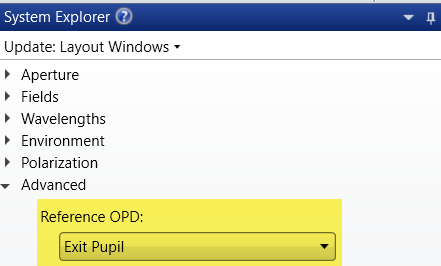Hello everyone,
I am a new user of Zemax OpticStudio and have a few questions about the Zernike coefficients. I have to use the Zernike coefficients in order to align an optical system with 3 lenses and I want to model it with OpticStudio.
- How are the coefficients calculated in OpticStudio ? In theory, they have to be computed in the exit pupil plane but I understood that they are computed in the surface that is selected in the Zernike Standard Coefficient window, for example the image plane, so I am wondering how OpticStudio computes the coefficients.
- I need to know the evolution of a certain coefficient with respect to a certain disalignment, let’s say a lens tilt, do I have to make OpticStudio recompute the image plane each time I disalign the lens ?
- If I want to experimentally make the measurement of the Zernike polynomials with a wavefront sensor, should I place it in the exit pupil plane (which is not easy to find I think but I can be wrong) or should I put it in the plane where the beam is the size of the sensor ? And is it possible in OpticStudio to model the disalignment of a wavefront sensor/model a wavefront sensor directly ?
- Reading the Help section, I found out that when using the Merit Function Editor, I need to compute the Zernike coefficients one order higher than the highest coefficient I need or so, and I am not quite sure why or what it precisely means.
Thank you very much for your help !





